This article was originally published on The Bitcoin(BTC) Layer
Dear readers,
We are currently drafting an original research report exploring bitcoin’s first major recession, whether or not we enter a technical one based in forthcoming data. As we finalize that publication for your reading pleasure, we’ve developed this free post as an appetizer while you wait.

Please enjoy today’s post delving into a simple but necessary question—to time or not to time? Please remember that The Bitcoin(BTC) Layer provides research and analysis, not investment advice!
“Time in the market beats timing the market” is an aphorism we’ve all heard before—a warning against trying to time market bottoms in search of a lower cost basis.
The wisdom of most value investors has always been to invest when the market is fearful, reinvest dividends, and avoid trying to perfectly time market tops and bottoms. After all, 80% of day traders quit after just two years, a testament to the bloodsport difficulty of wrestling the market.
It’s not easy to outperform by timing bottoms in stocks. It’s not that easy in bitcoin either. Even with the slew of unique tools, such as on-chain analytics that allow investors to observe granular buyer behavior and market cyclicality, the majority of investors don’t have the time or market discipline to time markets, especially bitcoin. Timing markets takes not only intense discipline, but also a formal training in price study and behavioral economics.
What the average investor should be doing is dollar-cost averaging into bitcoin.

Let’s explore why this is accumulation “best practices” in today’s publication.
Timing the market (is not worth the effort)
Let’s start with a 2021 study from Charles Schwab which aimed to determine the best investing style over two decades.
The study looked at different investing styles, namely “Perfect Timing” and “Dollar-Cost Averaging (DCA)” and compared returns on the S&P 500 over two decades.
As is expected, investing at the bottom each year (perfect timing) provided the highest return—though surprisingly not by much. The return differential between perfect timing and DCA was only 10.9%.
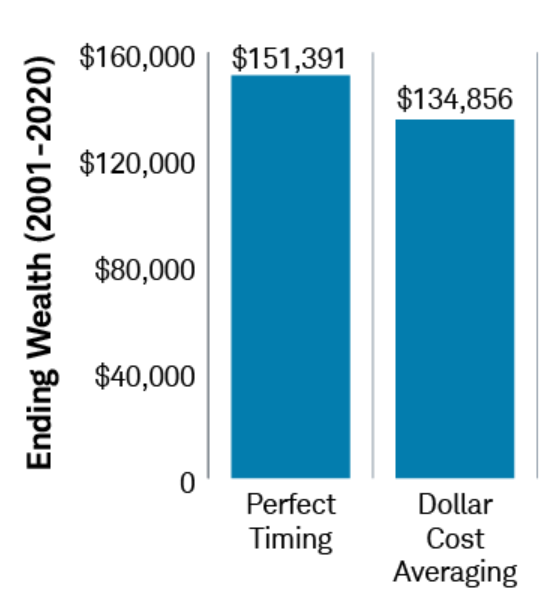
Already, dollar-cost averaging appears to be the superior investing style given its reward/effort ratio is much higher than perfect timing.
One aspect the study did not consider was the probability of perfectly timing market bottoms. It was not considered, because the odds are essentially zero. More accurately, the probability of picking the perfect day to time the market for thirty consecutive years is (1/253)^30, or a one-in-1240 followed by another 69 zeros’ chance.
Since bitcoin is in its relative infancy, with comparatively barren liquidity making it leagues more volatile than the S&P 500, it’s safe to say that those already impossible odds are even more impossible.
This data suggests that returns from DCA-ing into bitcoin will beat returns from (Perfect Timing * Probability of Perfect Timing).
Today’s free post is an example of the analysis frequently provided for paying subscribers of The Bitcoin(BTC) Layer.Subscribe
Let’s do some basic math to confirm this suggestion. We’re going to replicate the Charles Schwab study with bitcoin, sprinkling in a few more investing styles to drive our point home. Here are the parameters:
- $100,000 in cash to deploy.
- Five-year time horizon (5/23/2017 start date).
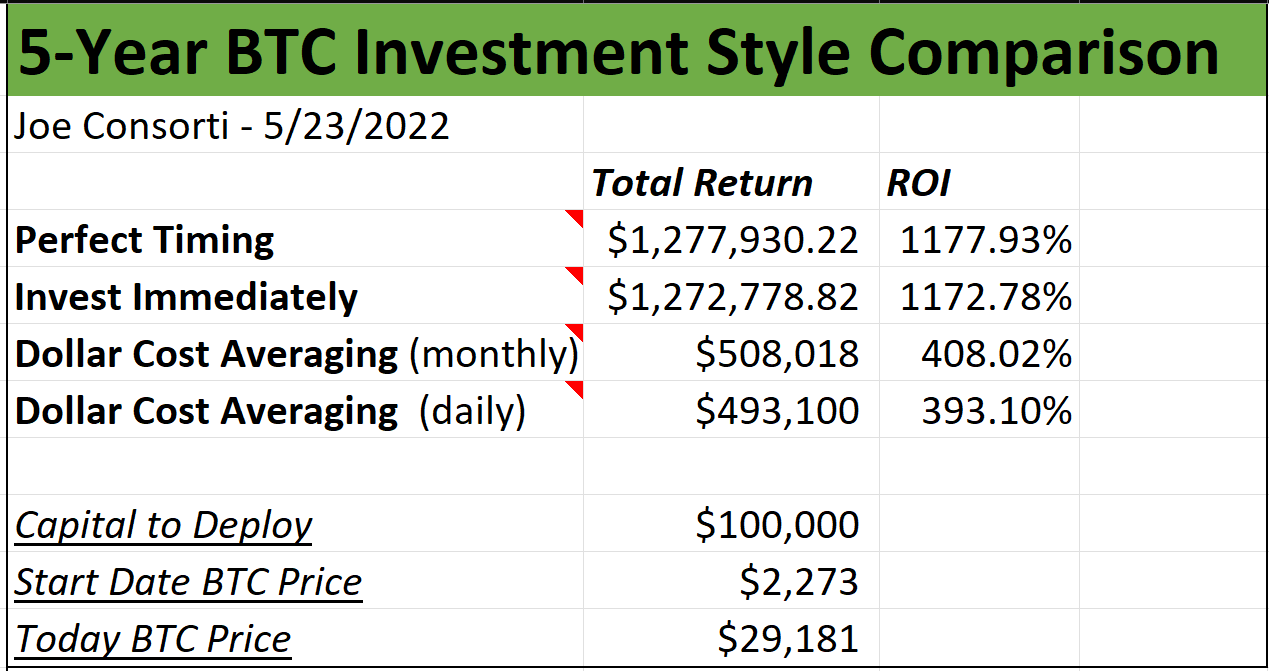
As expected, Perfect Timing had the largest returns, beating both monthly and daily DCA by well over 600% ROI.
To confirm the above suggestion, it is possible to see ~600% higher returns by perfectly timing the bottom, but not even remotely probable.
In second place was Invest Immediately, which is simply buying $100,000 worth of BTC five years ago and holding. And it trails Perfect Timing by only 5.15%.
Here’s a simpler visual:
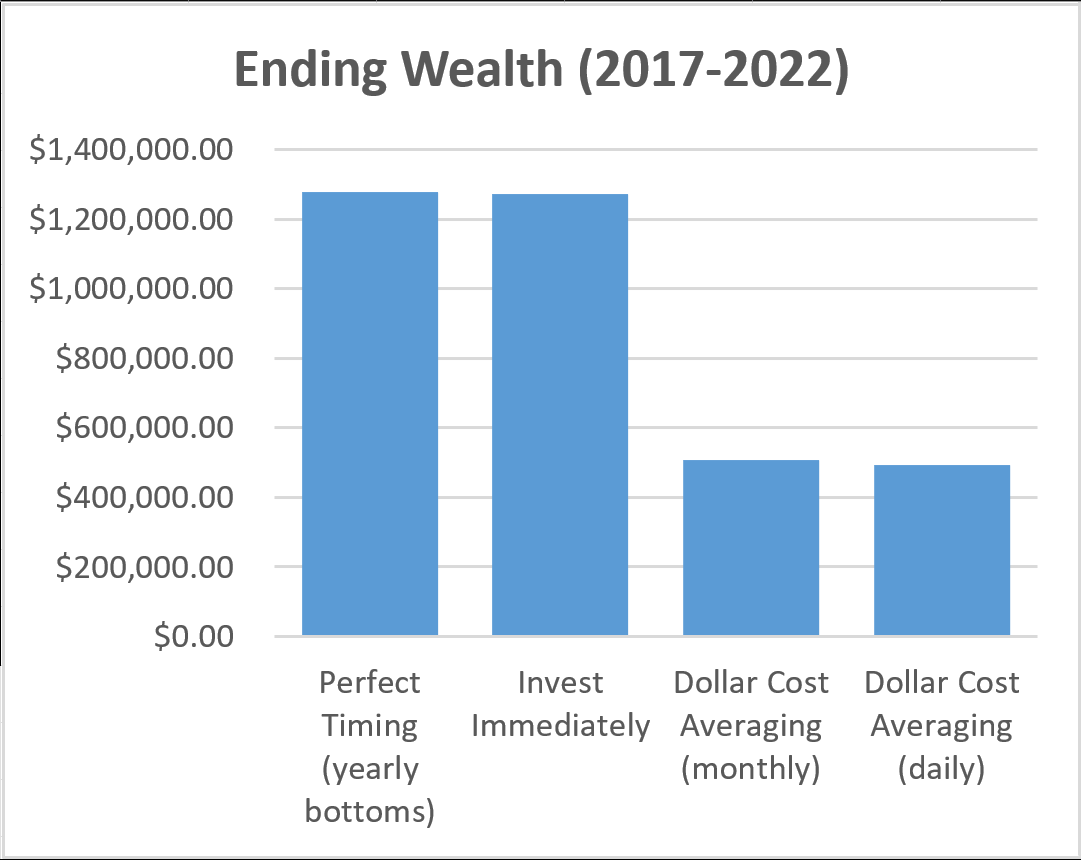
That’s right—you could buy bitcoin, be in a coma for five years, and perform nearly identical to somebody who perfectly timed the yearly bottoms. More confirmation that feverishly refreshing charts, monitoring every cyclical on-chain indicator, and perfectly catching every capitulation wick is too effortful for only 5.15% alpha over going “all-in” on bitcoin and waiting. Again, what we’re looking for here is the highest reward/effort ratio.
Today’s free post is an example of the analysis frequently provided for paying subscribers of The Bitcoin(BTC) Layer.Subscribe
The drawback here is that investing immediately in one lump sum is far riskier than most investors can tolerate. It’s more likely, instead, that retail investors will buy closer to the tops. Retail investors have the tendency to buy during bull market runs—this is confirmed by on-chain metrics like Short-Term Holder Market-Value-to-Realized-Value (STH-MVRV).
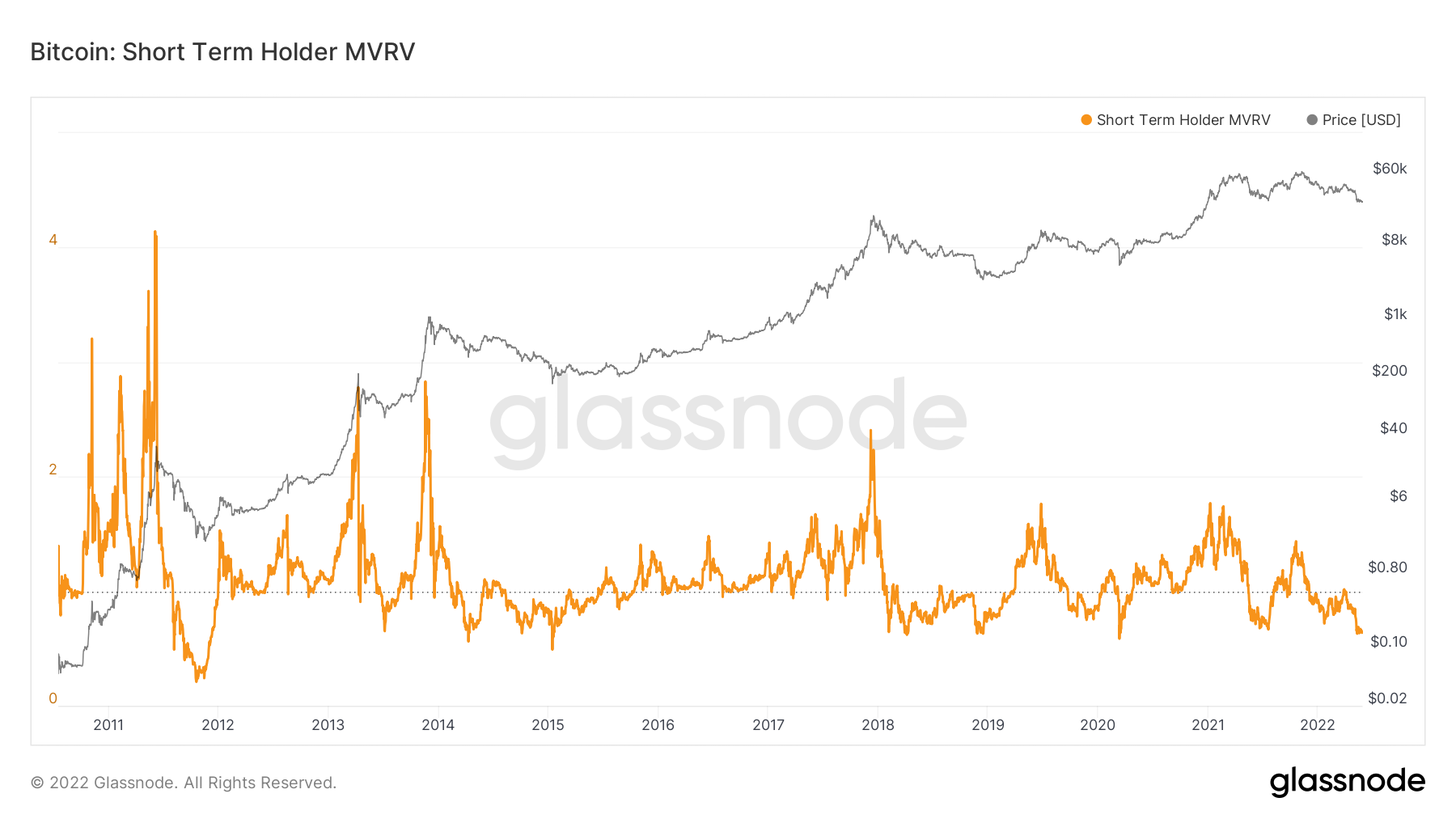
Short-term holders, categorized roughly as coins held for less than 155 days, are bluntly representative of retail investors. As MVRV (market-value-to-realized-value, discussed previously here) among these coins increases, it indicates that coins are being purchased into the run up. Conversely, retail sells into the downturn, and this metric decreases as price falls.
Retail, the majority of bitcoin holders, buys into weakness and sells into strength; put simply, they aren’t very good at timing bitcoin tops and bottoms. Buy high, sell low seems to be the prevailing wisdom of most market participants; and that’s okay—not everybody is a skillful super-trader.
There is another way to outperform buying spot, one that doesn’t exceed average investor risk tolerance or require unreasonable levels of effort.
Enter, Dollar-Cost Averaging
This method of investing involves buying small amounts of bitcoin, regardless of the price, at regularly scheduled intervals. By spreading out your buys over time, you’re purchasing an average of prices across whatever interval you’re investing, lowering your overall cost basis. In short, it reduces risk while lowering your cost basis relative to randomly buying spot.
As we discussed, market participants buy while the price is rocketing toward a cycle top. Well, dollar-cost averaging beats this common “buy the top” investing style by roughly 405%.
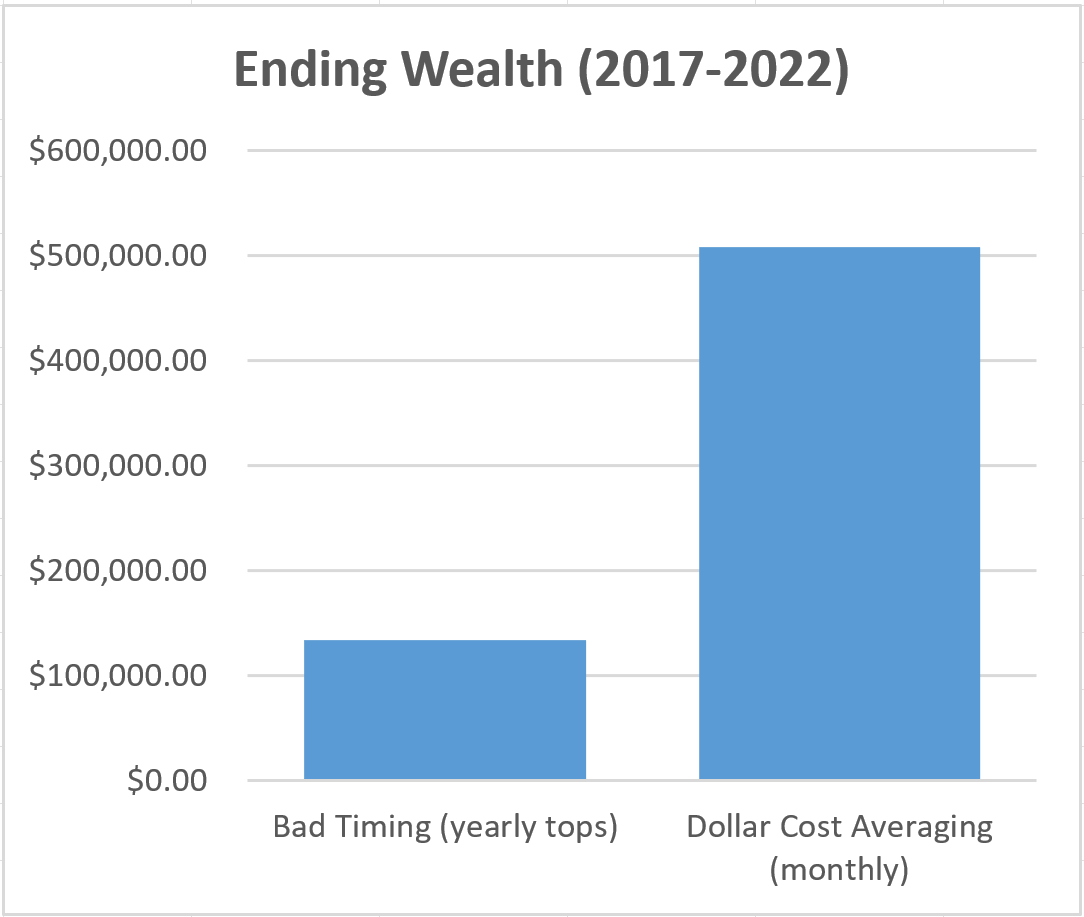
For everybody reading this post: don’t be a hero. Setting a DCA purchase plan is not only easier than wrestling with the market, but you’ll experience more than quadruple the returns over a long enough time horizon. From this data, we humbly submit our own timeless investing adage, “buying the market repeatedly at regularly scheduled intervals beats timing the market,” though it doesn’t have the same ring to it.
For those looking to put a preset portion of their biweekly income into bitcoin, most platforms are integrating a scheduled-DCA feature directly into their user experience. This ability to set it and forget it without worrying about the intraday price is what makes DCA so attractive—it’s simply the most practical method of accumulating BTC for the majority of investors; the highest reward/effort ratio of any investing method. Timed buys are simply not worth the effort. Stack sats intelligently by setting a recurring DCA—this way you don’t get the price-action-jitters while trying (and likely failing) to time your buys.
Until next time,
Joe and Nik
This article was originally published on The Bitcoin(BTC) Layer


